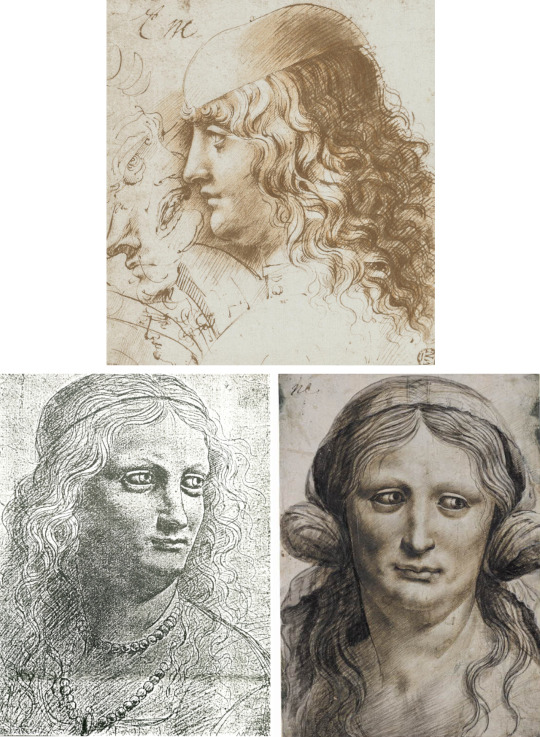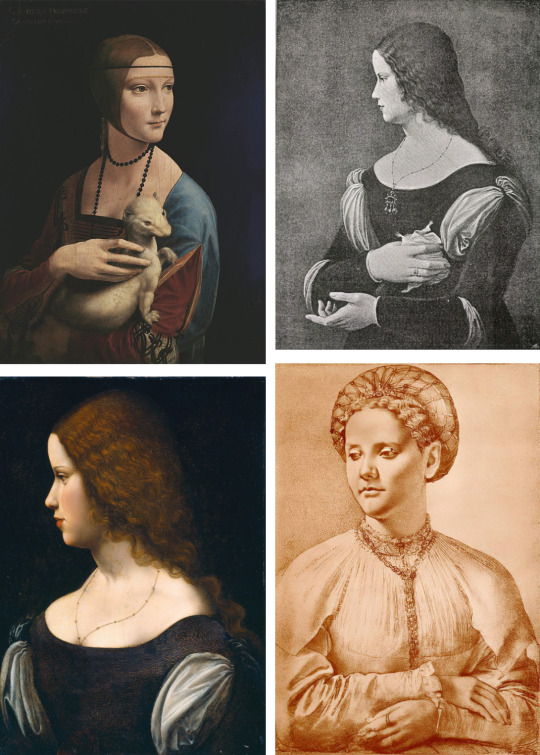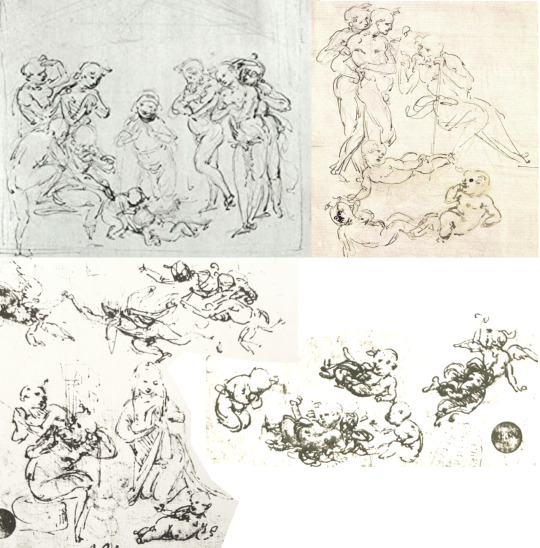#i feel like with blue the alt gain was less noticeable
Explore tagged Tumblr posts
Text
I have a Belle brainrot so have me rambling about differences between trailers and final version of the move, from scenes shot differently, to literal slight lighting changes (part 1 because image limit)
long post so i'm adding a read more
(lot of the scenes are not 1:1, I'm picking the closest screenshot i can find)
Release -> Trailer btw


1: The Rabbit girl As flying into U
Shot is filmed a bit closer and ever so slightly to the right. Her hat has a third rabbit ear on the back(??why??) and her hair is modeled a bit differently, it feels slightly shorter and less smooth. Outlines on her outfit also look a bit more thick and less refined, visible on her ruffles especially
2: Whale flying through U


a lot more blue! ribbon movement might be different because i couldn't match frames of it (or even the flowers)
3: this particular panning shot of the sky in U durning Gales of song


a lot brighter! the skyscrapers are slightly different. The blue one at the center at the bottom has 3 rows of windows in the trailer while th release has 6. One building got pushed back in the release. The windows have a lot less dimension in the trailer, but this might be related to the different lighting
4: the crowd that appears when Belle is about to fly by


you know it seems that U was originally a lot brighter and greener overall. It also looks like in the trailer, there's some kind of white void happening waaay off in the distance i right under the big U in the middle so U might have been modeled a bit differently too
an absolute storm of confetti is happening in the trailer and some AS got a little bit of a glow up! some were moved around too


maid AS gained a mask and went alt


swan(?) and fish guy from the shot before this one are actually in the crowd in the trailer which is neat, i wondered where they disappeared in the final
5: this shot of Beast's castle stairs


i'm pretty sure the trailer might be just a still drawing/render because only the cubes move in there.
Final is more circular and actually work like stairs should, unlike the trailer which, while looking cooler in the composition department, looks weird if looked at closely, unless my brain is being stupid
like what

6: Crow shot of Belle fans


Rabbit girl is looking up in awe instead of jumping in excitement. She's also more at the centre of the picture
7: some specific shots from this scene which i was able to match the exact frame of


less of a sun glare and much brighter whale. The background doesn't have motion blur applied and is a bit sharper by result.


also no sun glare, final got a few more speakers on the whale, again no motion blur


No flowers added to the foreground! which is interesting because i'm pretty sure those are rendered as actual objects in the scene, and not just an effect which would mean they had to re-render the scene just to add in the flowers. don't quote me on that though
8: this shot right before unveiling


this shot from the trailer right here does not align with any frame from the final, it's zoomed out more and is fully lit (final only gets fully in color after she raises her head while the trailer holds that pose)
also no extra work done to her bangs! I noticed that studio chizu often adds extra flair to Belle's hair when needed, like her bangs fluffing up here or adding some extra strands of hair, the trailer shot has none of that! that's how her hair would've looked like if they just left her base model as it is
slight difference in the shadow placement, final only has light around the face while in the trailer they go up to her upper lip
her dress tucks under her chest for some reason while it should instead tuck around her waist
9: some small changes in positioning


some dress straps were moved around


part of the bangs was fixed
there's a few more so we will be continuing in part 2!
1 note
·
View note
Text
*cracks knuckles* I can offer suggestions, but bear in mind, these are not necessarily all subclasses available in the game (subclasses = specializations), they're just based on wider D&D. On all the links, if you scroll down, the relevant *specific* subclass information is in blue. Elissa: Would probably be either a fighter or rogue, both have mixed subclasses. I could see her fitting the Samurai or Champion under Fighter. Ria: Rogue! With a purple personality, Swashbuckler feels like the best fit here. Vrania: Weighting some options, I feel like she might be a Wizard with the "Enchantment" school/subclass. You don't have to stick only to spells within a school, but if her primary modus operandi is manipulation, Enchantment has most of those spells. Necromancy and illusion spells would probably also be in her repertoire. Neria: Cleric of Life domain! You can definitely build her squishy in the TTRPG, that comes down to the ability scores (less strength and constitution), you'd just want to max out the Wisdom score as best you can. Alt!Ria: Probably could still fit the Swashbuckler subclass, though I could also see Scout fitting here (for variety). Mika: Again, Rogue, quite possibly half-elf (just for the sake of including the elf-ancestry without being elf), and perhaps with the Assassin subclass.
In terms of emulating the "blue/purple/red", the alignment system in D&D is simultaneously more complex and more simple; everything exists on two axes; Law and Chaos, Good and Evil. In between both extremes are "Neutral", such as "Neutral Good" being neither lawful nor chaotic, or True Neutral- no particular alignment, behaves according to the situation or personal beliefs. So! For example! A blue/purple character would probably be Chaotic Good; all purple is PROBABLY chaotic, and blue means an inclination towards good/helping others. There are a lot of things that can shape the character/stats/skills/etc in D&D, from backgrounds (you gain specific skills/training/knowledge) to feats (special abilities or traits) and more. You can even multiclass, SO you could make a Fighter/Rogue for Elissa if you wanted, for example. You can blend Wizard and Sorcerer (does magic through studying/books vs does magic because magic bloodline, closest to DA mages). In BG3, because it's still a pre-coded game, there are still some limitations (as opposed to a live DM that can change the rules/bend them as desired)... but I'm noticing a lot of freedom even still. More dialogue choices like in DAO. It's a lot of information to absorb, and probably sounds REALLY complex, but once you get into the swing of it, it comes pretty intuitively.
I don't have baldurs gate fomo. I just have baldurs gate mo :(
12 notes
·
View notes
Text
And some people say Unova is still underrated smh

#fan favourites#pmex#masters ex#pokemon masters ex#pokemonmastersex#i feel like with blue the alt gain was less noticeable#but seriously pmex just needs to calm down in general#personally any more than 3 versions is just too much#please flesh out other characters dena just because theyre (a stretch) doesnt mean theyre everyones favorite
1 note
·
View note
Text
Leonardo - A Radical Suggestion

1 : INTRODUCTION
For those of us who operate in the Arts and not the Sciences, what is the difference, I wonder, between a hypothesis and a thesis? If both are based on research, is it mostly a degree of conviction? What begins as one can turn into the other. For my part, as I will set out in this essay, what began as an inkling regarding certain pictures ‘by Leonardo’ is now a genuine conviction which has become nailed to a Lutheran door, as it were, as an article of faith. There is something risky about it, it is provocative, radical in fact and will doubtless be considered heretical by those with a settled opposing view. My proposal is this: I believe that four paintings which currently bear the ‘Leonardo’ attribution are not by Leonardo, but the works of two other artists: three by Ambrogio de Predis and a fourth by an unknown hand. I will demonstrate how, using methods of connoisseurship, it is possible to discern the techniques of these other artists in the paintings whilst also offering comparisons to genuine works by Leonardo. I will be looking at the following paintings (left to right): The Virgin of the Rocks (National Gallery London), Ginevra de Benci (National Gallery Washington), Portrait of a Musician (Ambrosiana, Milan) and Lady with the Ermine (presently at Wawel Museum Krakow)

Opinions such as these are likely to provoke outrage quickly turning to contemptuous dismissal, especially among the curators of the galleries concerned. The National Gallery in London, for example, despite already owning the genuine Leonardo Cartoon of the Virgin and Child with St Anne – a drawing, albeit a large one – has placed a great deal of significance in its claim to owning an important painting by the same. Similarly, the National Gallery in Washington has accepted its Ginevra de’ Benci as authentic Leonardo for so long, it has appeared in so many books on him and been seen as his by so many gallery visitors, that any suggestion to the contrary is likely to be dismissed as weird or ridiculous. The portrait of the Lady with the Ermine at Krakow is so confidently ascribed to Leonardo that she even became the poster-girl for the 2011 Leonardo exhibition in London.
In view of this expected hostility I feel it prudent to revert to the more tentative position of having a hypothesis or hunch, a voice that says ‘Suppose that this is the case, what are the arguments for it, what is the visual evidence?’ Hence the title of this Study: a supposition or ‘radical suggestion’.
Before looking in detail at pictures and drawings it is helpful to reconsider what kind of a man Leonardo was. What impression do we gain from all his drawings and notebooks, the records of his thinking? Surely it is of a person of immense curiosity. Mentally he was always moving on, investigating the forms and mechanisms of life, inventing solutions to problems, addicted to exploring the variety, complexity and sheer beauty of anything he encountered. There was, however, a synthetic aspect to his imagination as well as the analytic one, and every now and again he turned to painting and through it gave expression to that poetic rather than scientific side of his nature. This switch occurred at intervals in a life otherwise devoted to description, analysis and problem-solving. Hardly a day passed, one imagines, without him drawing and making notes, but months, even years may have passed in which he was not painting, though a painting awaited his return to it. Even without the subtractions I would make, what has survived of his painted oeuvre is small relative to that of any other major artist one can think of. Painting was not a constant preoccupation of his life, though he took its practice seriously and was interested in its status vis-a-vis other arts.
I : LONDON AND PARIS

The Virgin among the Rocks - National Gallery London
Given all this, what are we to make of the proposition that Leonardo made a large-scale copy of one of his own works? How likely is it that such a restless mind would allow itself to be detained for as long as it would take to paint a huge version of a composition which he had earlier completed and from which he had mentally moved on? Even if some circumstance had forced this on him, would he not have taken the opportunity to make revisions of the composition far more radical than we see? Beethoven at the piano was inspired and inventive: when he took his hands off the keyboard and a lady exclaimed that she would never hear such a thing again, he replied, so the story goes, ‘oh yes you can, madam’ and started off again, yet not repeating himself but inventing along the way because he could not help doing so. The same is surely true of Leonardo, witness the profusion of compositional ideas scattered through his drawings.

The Virgin among the Rocks - Musée du Louvre Paris
The Louvre Virgin among the Rocks is authentic Leonardo, I have no doubt. The forms of the figures, the shape of their faces, the drawing-related observation of plants and rocks, the suggestiveness of the cavernous environment, and the warmth of the palette, are all entirely characteristic of him.

The Virgin among the Rocks - London (left) and Paris (right)
It is the status of the London version that one has to question. The composition is broadly the same, but the colour scheme is colder and bluer, the handling of paint heavier and more prosaic, the atmosphere sepulchrally chilly.

Detail of the Virgin’s head in both paintings
One of the differences between the Paris and London pictures is the lighting which affects, of course, the colouring. In Paris we have a light reminiscent of evening, the western sun to our left; faces, hands and naked bodies glow with a golden warmth. The arm of the infant Saint John, pressing for balance on a ledge of rock, is like an arm in Caravaggio, lit dramatically with warm shadow. Despite the cold, damp, uncomfortable setting, there is the residual warmth of a day, embers of a fire that the angel’s red cloak under the greenish-grey mantle keeps alive. In London we have a lighting closer to moonlight, colder, whiter and bluer; the faces and bodies are illuminated more emphatically but less subtly. This relative heaviness and simplification does not suggest Leonardo but is characteristic of Ambrogio.

Colder blues in London, warmer lights cast in Paris
The circuitry - like a cat’s cradle - of hand gestures and eye focus that depends, in the Paris picture, on the Virgin’s left hand being poised above the angel’s pointing one, is broken in London by the latter’s omission; it is earthed instead by the long diagonal of the Christ-child’s cross. Something important is being left out and the resulting void is a central darkness that engulfs the raised hand of Saint John. Similarly, the beautiful iris and fern at lower left in Paris are replaced by less complicated flora not based, as Leonardo’s are, on drawn observation.

Top row - simplified plants featured in London painting; Centre - Leonardo’s studies of plants; Either side - more accurately observed plants featured in Paris painting
In London the rocks seem heavier and more depressive on the figures because they continue to the top and omit the arching of rock against sky which in Paris reinforces the Virgin’s ‘misericordia’ gesture as she puts her right arm round the head of her Son. The highlight in the gold mantle under her blue robe has a more complicated and spirited calligraphy in Paris and is omitted altogether where it appears in the Paris angel’s shoulder-wrap.

Leonardo’s eye for capturing the highlights and shadows of draped fabrics, clockwise from top left: Three drapery studies; Angel’s robe in Paris ‘Rocks’; Virgin’s hem in Paris ‘Rocks’; Madonna of the Carnation (Alte Pinakothek); detail from Mona Lisa (Musée du Louvre)
A theme in these Studies, and one of the insights that connoisseurship constantly throws up, is that how an artist draws will often if not always be reflected in how that artist paints; pencil and brush are used in similar ways. If, as I suggested earlier, Leonardo drew every day, it is very likely that when he painted, especially when he used a fine brush for more detailed final delineations, of plant stems or the highlights on sleeve-folds for example, we will see a resemblance between his mark-making with a brush and his mark-making with pen or pencil, chalk or silverpoint. And so it is, as these examples show.

Material details - fabric folds in Paris (left) and London (right) paintings
In the London version these final touches are absent because Ambrogio did not have Leonardo’s curiosity about natural forms, and his representations of them are inevitably more generalised and emblematic. Were I a supporter of the Leonardo attribution for the London picture, this omission would worry me greatly. Turn to drawings by Ambrogio, on the other hand, and one sees at once the coarser grain that is evident in the London Rocks.

Facial types in works by Ambrogio show wide eyes like those in London 'Rocks’
One begins to think that some of the challenges of making a replica of the Paris picture were just too demanding for the copyist, hence his omissions and the substitution of linear props like the cruciform staff, the haloes, and the vertical hemline of Mary’s robe. The major difference, however, remains the chromatic one: doing away with the angel’s red robe, combined with the loss of a quintessentially Leonardesque relationship between that red and the green, blue and yellow-gold in Paris, seems the surest sign of all that we are not looking at Leonardo’s work in London but at that of an artist who is happiest working with a palette of cold blues and browns.
2 : WASHINGTON

Cold blues and browns: that is what we find, among other signs, in the Ginevra de’ Benci at Washington (above) - the brown in the bodice, the blue-brown landscape beyond a sallow moon-face. particularly noticeable in that face are the high temple above eyes far apart, and cheekbones even farther apart with shadow under them level with nostrils, making mouth and chin seem disproportionately small. This is not a Leonardo construction of a face, but if one turns back to the London Virgin among the Rocks, it is there in the angel’s face and the Christchild’s though to a less exaggerated degree.
Noticeable, too, are the heavy upper and lower lids to rather long eyes. Here are some drawings, plausibly by Ambrogio de Predis, which reinforce these features as typical of his style.

Recurrent in them is a certain heaviness, an overemphatic modelling and lighting, the strange eyes, the long, broad nose, and a scale that seems to enlarge as one ascends from the chin.
There is a further feature to remark on in the Ginevra and that is the treatment of hair strands and hair curls: they look metallic, as if made from fine picture wire, and the curls are tightly coiled as we see in several drawings. This is Leonardesque in general - it reminds one of his deluge drawings and water studies - but Leonardo the painter does not apply the curling tongs in such a steely manner, there is more poetic sfumato blending the ringlets into shadow, exposing here, losing there. They should not assume more importance than the facial features.

Ginevra de Benci’s tight curls as compared with those from works by Ambrogio - there is a further connection between the painting (bottom left) of St John the Baptist and the inscription on the reverse of Ginevra’s portrait
If I seem to denigrate Ambrogio de Predis vis-a-vis Leonardo it is because the distinction to be made is not just of style but of quality. His way of painting, as of drawing, is heavier, colder, cruder and far less poetically evocative. To make a version of a Leonardo on the scale of the London Virgin among the Rocks is undoubtedly impressive and Ambrogio is a very accomplished artist, but when attribution is at stake it should be recognised, after due consideration and comparison, that his painting in London is nothing like as good as the Paris original. On every measure the Louvre picture is superior. As for the Ginevra, just put it beside La Belle Ferroniere or Mona Lisa, (below) and see how it fails on both connoisseurship counts, likeness and quality.

3 :MILAN

There is another ‘Leonardo’ that fits well with these attributions, and that is the unfinished Portrait of a Musician at the Ambrosiana in Milan (above), a painting which Giovanni Morelli long ago assigned to Ambrogio, I think correctly. We are presented here with a memorable face and a convincing portrait of an individual, but once again the exaggerated lighting, the shape of the eyes and lids, the mouth, the wire-like curls and the low-slung cheekbone that is level with the nostril and far from the eye, betray, when taken together, the style of Ambrogio, not Leonardo.

The Portrait of a Musician and three works by Ambrogio all displaying similarly wide eyes and facial types - Head of Francesco Melzi; Portrait of a Young Man; Head of Bacchus
It is a style that produces an impression of forceful character, but just because it errs on the side of being over-determined it lacks the subtler sfumato, the more reticent but mysterious presence that is the ‘poesia’ of Leonardo. This is more assertively a portrait, but Leonardo, who was no more interested than Michelangelo was in the individual - and therefore not at heart a portraitist at all -aspires to a more universal and depersonalised image, the sublimated type of Mona Lisa. The contrast between the two men is admittedly disguised somewhat by the assimilation to Leonardo’s manner - Ambrogio was, after all, his close associate and admirer and his work is more nearly Leonardesque than most of the master’s followers - but the differences are there to be discerned and if we do not discern them I fear that our conception of Leonardo the painter will remain blurred by inconsistencies that distort our proper understanding of his development. He did develop, but credibly, not by suddenly adopting a new palette or a new way of constructing a face.
4 : KRAKOW

The focus of this Study being on what is, and is not, by Leonardo, I can leave Ambrogio now and turn to a work not by him but not, I believe, by Leonardo either, accepted though it usually is as an important example of his art: the Lady with the Ermine portrait of Cecilia Gallerani at Krakow. Whatever one’s theory about its authorship, few would disagree that it is a work of high quality, beauty and sophistication, almost certainly from the best years of its maker.
With that tribute to the work I shall cut to the quick of the connoisseurship argument by setting it between three other items (clockwise from top right): a painted Portrait of a Lady from the Musée Jacquemard André in Paris, a very impressive portrait drawing of a Woman, from the Uffizi Gabinetto and a profile Portrait of a Woman from the Kress Collection at Washington.

The salient features linking them are the smooth Bronzino-ish modelling, the profiles, the flesh colour, the treatment of folds in sleeves, and the form of the long-fingered hands. That curious pose of Cecilia’s right hand with its long and separated digits is not to be found, I think, in genuine Leonardo, but we shall see that it recurs in this master’s work.
With these initial comparisons in mind one can go on to other drawings and paintings bearing similar characteristics. The very soft muzzy shading within fine linear contours and hairline comes again in a drawing from the Pembroke collection at Wilton House; the woman’s profile repeats that of the Lady in the Kress painting.

Profile of a Woman - Wilton House
At Windsor, in the Leonardo corpus, are three studies of feet, one a child’s, that are clearly in the style of the drawing of the Lady in the Uffizi and the Pembroke drawing. A further drawing, from the Ambrosiana in Milan, not only belongs with it in drawing style but also makes a link with the Krakow painting of Cecilia Gallerani.

One sees the fastidiously neat, centrally-parted coiffure, relatively slight eyebrows, long nose, similar mouth, pointed chin. Some of these items might even be of the same woman; however, it is similarity of type and style, not identity of sitter, that is relevant for attribution, and as a group these drawings and paintings already suggest a common style and a common authorship that is distinct from what we recognise as ‘Leonardo’, and distinct also from Ambrogio de Predis. An artistic personality begins to emerge that makes the attribution of the Krakow picture to Leonardo seem increasingly unsafe and improbable.
The improbability is only confirmed when one moves to a painting of the Virgin and Child with an Angel and Saint John at a museum in Budapest. Here is the Krakow hand; here the marmoreal smoothness and delicate blush to the cheek; here a deep wine-red under blue mantle (and over a black-striped white silk undergarment); here the brown colour (in Cecilia’s right forearm; the wooden border of the angel’s lute); here the precise coiffure, pointy chins, delicately defined finger and toe nails.

Painting of the Virgin and Child with St John shows near identical hand posture to Lady with the Ermine, as well as similarities to unattributed studies of a child’s head (Musée des Beaux Arts Caen) and an engraving of an Old Man (Metropolitan Museum New York)
Relevant to this work in Budapest is a drawing in the British Museum (below) where the Child’s hand raised in benediction is much the same, and the Virgin’s hands around Him similarly arthritic but almost claw-like.


Enhanced close-up of the hand from the drawing showing a similarly “double-jointed” hand to that of the Lady with the Ermine
A much annotated drawing in the Uffizi, purporting to be of Beatrice d’Este, shows the Krakow Master’s refined line, but adding eyelashes which Cecilia Gallerani lacks. There are similarities between this Uffizi drawing and a supposed self-portrait drawing of Melzi at Bayonne: the same smooth modelling and combed hairlines (below).

Mention should be made at this point of an earlier, very charming work, a reliquary from the Sanctuary at Crea which has a portrait on one side of the Marchese di Monferrato and on the other his wife, Anna d’Alencon.

The portrait of the Marchesa is particularly close to the Krakow portrait, not in date but in profile, shape of face and facial features, treatment of hair, black necklace, juxtaposition of brown and slate blue.
More paintings and drawings, some in pen and ink, could be introduced to flesh out the career of this artist and take it back to its beginnings or forwards, to the Sforza Altarpiece; but for present purposes enough, I hope, has been garnered to make the case that the picture, fine though it is, is not by Leonardo but by another artist working at or near the height of his powers.
5 : CANON
Between the subtractions from the current Leonardo canon that I have proposed above and some additions to it that I would like to put forward for consideration, we can usefully mention what remains that is generally undisputed. With regard to early work there is room for dispute. I would argue, pace Vasari, against his having painted an angel in Verrocchio’s Baptism, on the ground that I see no difference between the two angels in the way they are painted, and that that way was Verrocchio’s way, as a drawing by him makes clear.

Verrocchio’s Baptism of the Christ and drawings of the Head of an Angel (Uffizi) and the Head of a Woman (Christchurch)
On another occasion I would at least cast doubt on Leonardo’s hand in the painting of the Virgin’s and angel’s heads in the Uffizi Annunciation while not denying that he contributed to other parts of both that picture and the Verrocchio Baptism. There is also an argument to be made about the authenticity of the much repainted Benois Madonna in the Hermitage.

The Benois Madonna (left, attributed to Leonardo) bears similarities in style with the Virgin from Verrocchio’s Annunciation (right)
Apart from numerous drawings, the London Cartoon among them, we are left with the five pictures in the Louvre (Madonna of the Rocks,Virgin and Child with Saint Anne, Mona Lisa, La Belle Ferroniere, and Saint John the Baptist); the Madonna with the Carnation at Munich; the Last Supper fresco at Milan, the unfinished Adoration of the Kings in the Uffizi; and the unfinished Saint Jerome in the Vatican. What, if anything, can be added?

Leonardos at the Louvre

Leonardos around the world
5 : ADDENDA
I have not seen, nor do I know the location of, this probably small painting - perhaps a fragment, perhaps of the head of the Virgin (below). It was once in a private collection in Lugano, but is known to me only from a small but fortunately colour reproduction in an obscure catalogue of an exhibition of ‘Masterpieces of European art’ compiled by Amadore and Tony Porcella, at Tally Ho, Las Vegas, in 1963.

The book is a curious miscellany with some questionable attributions, but this one image has stuck in my mind and I remain as strangely confident now as I was when I first saw it that the original, if one knew where it was, would turn out to be a genuine early work by Leonardo, as the Porcellas claimed.
Place this image next to the renowned drawing at Turin of a woman’s head, and it is fairly easy to turn that head around a little and down a little to get the same or a very similar physiognomic type that is classic Leonardo. Place it against the Angel’s head in the Louvre Virgin among the Rocks and much the same match is achieved, with also, significantly, the same combination of red and green from a palette that is decidedly warm - the necessary warmth of an umber ground for anything to be by Leonardo.

Faces in drawings by Leonardo compared with Porcella image

Colours in both Porcella image and Louvre Virgin of the Rocks
My other proposal on the credit side is a painting at Wilton House near Salisbury, one of a number of extant pictures on the theme of Leda and the Swan, a subject known from his drawings to have occupied Leonardo’s attention. This Wilton Leda is ascribed to Cesare da Sesto.

Leda and the Swan attrib. Cesare da Sesto - Wilton House
When I saw this Leda in the National Gallery’s 2011 Leonardo exhibition I remarked to my companion ‘Isn’t this good enough to be Leonardo’s?’ and added, to myself, ‘but I suppose the experts know something we don’t’. Now, after further consideration - seeing how faithful all aspects of the picture are to the pictorial language and practice of Leonardo, and finding in the language and practice of Cesare da Sesto nothing that convinces me that he could mimic Leonardo’s so perfectly - I simply ask of those experts: if I am missing something on the visible surface of that picture that clearly demonstrates that it must be by Cesare da Sesto and cannot be by Leonardo, please provide an equally visual argument to explain that case. To my eye the head of Leda is nowhere near the characteristic female head in Cesare’s work, but is extremely close to well-known drawings by Leonardo.

Examples of Faces in works by Cesare da Sesto - details from Madonna and Child with the Lamb; Study of a Man’s Head; detail from Madonna and Child with Sts John and George

Studies for Leda and the Swan by Leonardo at Chatsworth (Top Left) and the Royal Collection at Windsor
The warm palette and all the background and foreground of the composition are likewise relatable to Leonardo and to studies by him of mountains, children and plants.


The children in the painting are reminiscent of sketches by Leonardo


Landscape details can also be compared to studies by Leonardo, like those at the Royal Collection
Of course artists make copies of work by other artists, but in doing so they cannot help unconsciously introducing traces of their own habitual styles of figuration, physiognomy and palette. We know that even an artist with a conscious desire to deceive people (who therefore studies what he copies very carefully) betrays these personal idiosyncrasies. The Wilton picture, I suggest, merits consideration as authentic Leonardo. It is a work of remarkable quality, better, surely, than anything Cesare da Sesto ever achieved, and I would be quite happy to see it slipped into the oeuvre of Leonardo pittore, somewhere, at a guess, before Mona Lisa, because of the less veiled and mysterious landscape. I would add that what could be an autograph study for, rather than after, the head of the Wilton Leda is a beautiful grisaille (11 by 8in) sold by Christie in New York on 7 Dec 1977.

6 : CONCLUDING
I hope that this Study and its predecessors helps to demonstrate to anyone sceptical of the value of connoisseurship that, in common with any form of criticism, it is not a science but definitely a discipline, and one moreover that, properly practised, with plenty of close visual comparison can lead to a reappraisal, sometimes, as here, quite radical, of some of the leading lights in our pictorial heritage.The word ‘close’, however, is to be emphasised. There is no point in having a juxtaposition like this one (below) from a recent National Gallery exhibition catalogue, where the drawing is insufficiently similar to the detail in the painting and bears no resemblance to any drawing by Leonardo. Comparison must be accurate enough to advance an argument rather than spread confusion.

There is no lack of attention paid to Leonardo, but it is too often of a kind that produces claims of authenticity such as the Salvator Mundi of current fame, which connoisseurship, if applied, could show to be misplaced.
Alternatively, attention is of the kind that is not radical enough and tends to re-present the same items from one monograph or exhibition to the next, simply because it would look strange to omit them. The accumulated weight of past opinion confirms the rightful place of, say, the Ginevra de’ Benci in any presentation of Leonardo the artist. If it becomes unthinkable to leave her out, it becomes ever more eccentric to question her inclusion; so she is re-displayed or re-produced ‘on the nod’, with no questions asked.
There are, sad to say, vested interests at work here. The Ginevra, like so many famous images, belongs in, and to, a famous museum. Its curators, and curators everywhere, develop a quasi-proprietorial relationship with ‘their’ collections that is not so very different from that of private collectors. Naturally they do not want to risk asking, or inviting, questions that could undermine the prestigious status of a work in their care, lest doubts should lead to a less prestigious one. The reputation of connoisseurship itself has unfortunately been tainted by practitioners having these or other sorts of vested interest. Unattached to any institution I am powerless but lucky in this respect at least: being a private researcher I have no vested interest at all. Whether a picture is by Leonardo da Vinci or by Ambrogio de Predis is of no concern to me beyond my desire to ascribe it correctly, no matter who owns it or what its market value may be.
For all sorts of unquantifiable reasons I value Leonardo. I hope that the questions I raise here may lead to a more coherent, less inconsistent picture of his enduringly beautiful art.

2 notes
·
View notes
Text
transitions & transformations
i. the rest of my batch at RC
I spent the first six weeks of my batch at Recurse Center in an out-and-out sprint. I learned Python, built and released projects, and wrote blog posts every week. I wasn’t sure where my limits were, but I was determined to find out - preferably by overshooting them, then adjusting after the fact.
A curious thing happened. I kept finding that I was more than capable of starting and finishing projects, especially when I had a firm mental image of the end goal. There were at least as many unexpected good-turns as there were setbacks, and I certainly didn’t come up against any inscrutable barriers. Mostly the challenge was in overcoming the distance between a thing that doesn’t exist and a thing that does, which I was able to sort out pretty handily through a consistent application of effort across time.
Who’d have thought?

A selfie taken on my birthday, which also happened in the last few months and was really great!
The second half of my batch was not so visibly productive - with the exception of The Question Game. The Question Game is a simple game designed to help groups of people get to know each other better IRL. I designed it with my friend Brittany a few years ago as an icebreaker when we found ourselves in a group of folks who knew us but didn’t really know each other. The game only really needs a method of generating random numbers for a small but arbitrary group size, but building it out as a toy webapp was a good excuse to get practice working with a JS-only stack. I learned React, got a lil more familiar with node, and even went as far as to attach an otherwise completely unnecessary PG database and Sequelize ORM. You can see the code for it here. Outside of this project, however, I didn’t publish any code. I didn’t publish any writing, either.
So I’d like to take a moment and shine a bit of light on the work that I did during the rest of my batch.
🌒 🌓 🌔 🌕 🌖 🌗 🌘
First, I made the decision to leave community.lawyer, the social impact startup I co-founded in 2016 following the Blue Ridge Labs Fellowship.
I’m happy to report that I left on the come up, which seems a rare and privileged thing for a founder to be able to say. Gaining traction in a hyper-specialized industry like legal tech takes a gargantuan amount of sustained forward momentum, and I departed just as we began to reap the fruits of our labor. In the last few months community.lawyer has reached final approval on partnerships a year in the making, won federal grants we’d submitted to in 2016, and every day our software is being used to help connect people who have legal needs with credible lawyers. Our first two partners were exactly the types of legal organizations at the heart of our mission: the Justice Entrepreneurs Project and the DC Reduced Fee Lawyer & Mediator Referral Service.1 Based in Chicago and Washington DC respectively, these orgs are specifically chartered to deliver quality services at rates that more Americans can afford. I am so proud. ⚖️
Second, I started my first ever job hunt as a software engineer. Wowee, this was scary! I knew that I had to prepare for interviewing, which meant a) getting my career change narrative straight, b) studying Data Structures & Algorithms 101, and c) learning how to perform my handle on both of these in a live, semi-adversarial environment.

At one point during my batch my laptop broke. I read through this wonderful illustrated book during the two days it was being fixed.
In order to direct my search I also had to craft a set of selection criteria of my own. Foremost: “What good will my work do for the world?”2 Additionally, “What degree of access will I have to supportive mentors?”
Getting started with interview prep was a challenge, at least partly because I had so many options for where to start. But I did get started! I read Cracking the Coding Interview, I did the free trial and weekly free problems on Interview Cake. I attended a few group mock interviews at Recurse Center and signed up for a 1-1 mock interview with an RC alum. Her name is Leah, and she’s amazing - the superbly friendly and encouraging Comp Sci TA I wish I’d had years ago. 💚Brittany also set up mock technical screens for me with her pals, Leaf and Ian. They were the vanguard against my outsized anxiety about programming for an audience and they each took the time to give me solid feedback.
Third, I extended my batch at Recurse Center by another 6 weeks. I had decided early on I wouldn’t extend (for no real reason) and stuck with this decision up until two days before my batch ending. A small group of folks - Lily, Connor, Alicja and I - went to NYX in Union Square to try out lipsticks. We played with different colors and finishes (satin! matte! shimmer!) for half an hour or so. There came a point when I looked up, glanced across the narrow makeup store at my beautiful friends’ beautiful faces and thought, “You know, you don’t have to leave yet, right? What’s the rush?” I’d already accomplished my primary goal, to forcibly rework my identity as an engineer, but it sure seemed that I could stand to reach for a second one. That night I decided to extend my batch, with the intention of sampling a more open method of self-directed learning, i.e. with a little more chill and a lot less panic. Specifically, I wanted to practice connecting meaningfully with my limited supply of social energy.
In my bonus six weeks, I: gave three talks (2 planned, 1 impromptu) under encouragement from Ayla and Lily, learned to juggle thanks to instruction from a fellow RCer, Edward, who also loaned me a book about learning, made it into weekly Feelings Check-in (read as: opt-in support group) fairly regularly, picked my first ever lock, saw a live-coding show and then later attended two live-coding workshops (one on TidalCycles, another on Super Collider), sat in a dark room and played howling wolf clips while Microsoft Sam read grimoires aloud, got my hair braided for the first time in a decade, made dumplings and DJ’d for a dinner party, connected with folks about queer-poly relationships, gave fiery advice, and received compliments so earnest and rational and persistent that it was difficult to refute them.

Zine fair plus Lightning Bolt concert inside a movie theater in Times Square??
I also put my interview prep to use and interviewed with a handful of Recurse Center partner companies. Job searching meant squaring off against impostor syndrome and a ton of related anxieties in rapid succession. I successfully choked most of that down when it mattered, though, and it was only a couple short weeks before I received my first offer.
To that end, I’m super happy to say that I’ll be joining Blink Health as a Fullstack Product Engineer! Blink Health is a healthcare startup in SoHo. They make it easier for people to afford prescription drugs, especially for those with limited insurance plans or none at all. These savings aren’t trivial either: an extra $50 can spare someone from choosing between groceries or medicine that week, and for some folks Blink saves many times that. I’ll be starting at the end of this month. ✌️🤓
The last two years have been a wild ride: participating in a social impact fellowship and accelerator, busting my product chops and learning web dev to get a public benefit company off the ground, then diving into four months of self-directed learning at Recurse Center. I’m really looking forward to having some externally imposed structure again. Real health insurance, too.
ii. some hard truths
I made a few radical life changes in 2016, like getting involved in activist spaces, dating more, biking everywhere, building strong friendships, going capital-B Boogying, programming full-time. As I carried those changes forward through 2017, I began to notice a lot of mental and emotional reconfiguration happening to me.

Did you know that along its way to becoming a butterfly, a caterpillar nearly completely liquifies inside its cocoon?
Psychological growth is confusing, full of false starts, and generally painful. You’ve got the static pain of stretching beyond your limits, the pleasure-pain of feeling an old knot finally release, the frustrating pain of stubbing your toe because some helpful asshole has been rearranging your psychic furniture when you weren’t looking. There’s the more dramatic knife-in-the-gut pain of realizing that just because you’re growing doesn’t mean the people closest to you are, and that now in certain cases what you previoulsy regarded as friendship actually looks a whole lot like run-of-the-mill exploitation or even emotional abuse, if you're being honest, and it's a realization that only hurts more because it’s so irredeemably cliche and boring. And despite all that pain you gotta go ahead and grow anyway, claw your way out of the relative comfort of ignorance. Transcendence may not be the only show in town but afaik it’s the one most worth watching.
Prior to attending Recurse Center I’d spent lots of time exploring my surroundings and cataloguing people and places worth coming back to. My view of myself did change (and positively!) as a consequence. But sooner or later, ya get tired of the taste of low-hanging fruit.
So, armed with the bookshelf of a philosophy grad and a burgeoning psychoanalytic vocabulary begging to be let off leash, I decided to use my time at RC to try confronting a few of my Hard To See truths in addition to becoming a better programmer.
Here’s what I’ve found so far.
Truth #1: People like me a lot. This causes me problems.
I’ve been metabolizing this one for some time. I remember having a conversation with Brittany in January of 2016. I don’t remember what social anxiety I’d been vocalizing, but I must have been worrying that someone “hated me.” Brittany cut me off, exasperated in the way that only a friend can be in the face of utter delusion: “No one hates you Nicole! You’re always worried that people don’t like you and it’s never true!”
I carried that admonishment with me through two years of voracious friendship-building. On the whole, seeing that people do in fact enjoy and seek out my company has curbed the most egregious overreaches of my social anxiety. But reckoning with my anxiety honestly has also meant acknowledging that my compulsive instinct to withdraw from social situations is also a protective (if suboptimal) response to a few very real dangers.
Most acutely: being friendly, generous, and intensely empathetic makes me a ready target for users. I try to give people the benefit of the doubt for as long as I can, which makes me proportionally susceptible to being taken advantage of and then gaslighted about it. A lifetime of socialization as a petite woman don’t help, neither. This leads to a pattern where, semi-regularly, I look up and take stock of how someone has been treating me and realize that the answer is Very Badly, For Quite A While. This in turn leads to rough periods of cutting ties and moving on. Ideally I’d like to be be able to filter bad actors out sooner, but I also want to stay open, giving, and hopeful beyond reason. Those desires are fundamentally at odds with each other - raising vs. lowering one’s defenses - but it’s clear that I need to come up with a strategy that balances both.
More broadly, though, I operate under an ever-present dread of inevitably disappointing everyone who knows me. Whether people project onto me because they already like me or like me more because they project positively onto me, I am extremely sensitive to the fact that when people meet me the conception they form has waaay more to do with what they want to find than what’s actually there. My body is a surface readily projected upon: young, female-shaped, ethnically ambiguous, small, smiling. These well-intended projections cause me the most trouble when people see me interacting socially; they’ll witness fifteen minutes of seemingly effortless extroversion on my part and extrapolate out massively. As far as they’re concerned I’ve got plenty of social energy to spare, and if I don’t spend it hanging out with them, it must be because either my friendliness is fake or I don’t like them.
Pretty much none of this is conducted consciously, of course, but it still creates a lot of unnecessary pressure that I can’t pretend not to feel and resent. I know there are people who dream about attaining this kind of “popularity” - to be assumed Cooler than one truly is - but getting buffeted around by folks’ totally unexamined, unarticulated psychological desires mostly sucks.
Truth #2: I’m non-binary.
I’ve also spent a very long time resisting this one. Two decades on the rack, easy. As such, the story of getting here is long. Perhaps one day I’ll tell it. 😛
The short of it, though, is this: I’m probably at least as much of a boy3 as I am a girl. Outside of where my life has been mutated by the chronic background radiation of sexism, “benevolent” and otherwise, I don’t strongly identify as a woman. Furthermore, I find the two-gender system to be infinitely more alienating than comforting. Gender is a social construction designed to impose order on the natural messiness of sexual experience, and as far as I’m cool with that, I am decidedly Not Cool with the “normal” state of affairs, i.e. aggressively shoving whole human beings into an absurdly reductive false dichotomy.
Between its either-or-ism and its forced assignment, the traditional approach to gender reveals itself to be obviously bullshit to anyone who spends more than a few minutes thinking about it. Its boundaries are arbitrary, inconsistent, and generally ill-fitting at the level of individual experience, which why they require such an outrageous amount of coercion and bodily violence to enforce. As much as other folks want to participate in a system of ritualized violence I guess they are free to? Personally, I’d prefer to see it actively dismantled.
If gender is to be saved it’ll be by subverting it, taking it apart, remaking it into something life-affirming. Not the dehumanizing garbage we’ve got now.

As of yet I don’t have any plans to change my presentation because I don’t fuckin’ gotta!
I do have a preference towards They / Them pronouns, but She / Her is still fine. For most of my friends this isn’t going to be at all surprising nor will it in any way negatively impact our relationship. Anyone who needs me to just-be-a-girl, however, can expect turbulence.
Truth #3: My righteous anger is justified and I am good at using it to help others.
I have felt conflicted about my anger for a long time. Since a very vocal childhood I have been regularly frustrated by prejudices and injustices, and I was frequently the first voice of dissent against them, whether that meant challenging adults or my peers. Unsurprisingly, I became well acquainted with the standard strokes of the backlash.
When you are confronting bigotry in a mixed environment, the voice of the status quo will generally manifest in one of two ways:
Gaslighting, e.g. “you are wrong to have said this at all, obviously I am a Good Person, you are just imagining that what I said sounded like XYZ, honestly how could you even think this, as a matter of fact it is I who is offended!”
Tone policing, e.g. “you’re too upset about this! after all, I, the person who did Fucked Up Thing, am perfectly calm about Fucked Up Thing, so any amount of anger makes you irrational by contrast, and I get a raincheck on whatever this is about!”
I know these responses are repulsive. I know they are merely the signs of a weak and imperiled ego acting out of fear. And yet I still spend an inordinate amount of time second-guessing my own anger. Gaslighting and tone policing are a favored weapon of the status quo because they work, and they work in direct proportion to how agreeable their target wants to be.
content warning: the following segment talks about sexual harassment and assault
About couple weeks ago I had the misfortune of being sexually harassed at a club in Bushwick. After numerous rejections and explicitly telling a creep bothering me, my friends, and other women in the club to get lost, I finally went to get a bouncer to eject him. The bouncer got the creep to leave. When I went to thank him, the bouncer told me a whole story about how the creep was “a harmless guy.” Then he reached down and grabbed my ass. Presumably he felt entitled to do this after helping me get rid of a person I asked him to remove... for unwanted touching.
It Really Sucked.
At every turn during the whole ordeal (and its aftermath) I had to hold onto my anger, convince myself that I wasn’t overreacting, remind myself that anyone who thought this was acceptable to do to me is almost certainly doing worse to more vulnerable people. I kept picturing myself the way this guy, this man in a position of power, must have seen me in order to feel okay doing what he did. That I was young, small, female, too friendly to say No, already indebted anyway; that he was one of the Good Guys, that his behavior was also “harmless” because he had decided it was. I conjured up as much anger as I could, pushed down the nausea of envisioning my own degradation from an attacker’s POV, and got to work. I reached out to the club and was quickly put in contact with the owner. The venue now has a publicly posted zero tolerance sexual harassment policy. The entire staff is going through training with a local org dedicated to creating safer nightlife spaces. And that motherfucker has been fired.
I demonstrably made the world better. I wasn’t alone, but all that happened because of my actions. Me and my anger, we did that.
I wish more people were this fucking angry. 💢
~ end of content warning ~
iii. an opinion
My Saturn return is upon me, y’all. As Frank Ocean serenades, we’ll never be those kids again. I have lived a few of these here nine lives and it seems only prudent to be moving forward with some sort of opinion on the matter.
My opinion is this: us folks with financial and physical security should be spending more time fixing shit around here. Figuring out what needs fixing and how you might help are the first steps.
If you’re operating on a similar scale of privilege as I am, maybe that means changing jobs to do more mission-oriented work. If you can’t swing a change of that magnitude, maybe it means showing up to community events and engaging with, caring for, supporting people you otherwise wouldn’t talk to. Churches, libraries, volunteering, supporting local artists, participating in local politics - this all counts. If you’re already doing this sorta thing, that is awesome! Maybe you also have a friend worth inviting who you sense is just itching for a chance to exercise compassion?
I’m using “fixing” pretty loosely here, too. Fixing, to my mind, means making the world brighter, safer, and sweeter for your fellows, human and otherwise. We’ve all got different ideas about what that looks like, and there are definitely folks - myopic or malevolent or both - who will swear up and down that their fear- and hate-driven behaviors will bring about better world. Ultimately, though, I believe that many hands reaching towards their personal vision of Better will in fact make things Better, especially when that vision is informed by meaningful interaction with the real world and its real sorrows and its real triumphs.
But ya gotta reach. Ya gotta try.
I am so tired of hearing my well-fed, well-homed friends piss and moan about late capitalism4 without lifting a damn finger in service of the communities bearing the brunt of material hardship. Unfettered capitalism sure does have a marked tendency to wreak havoc on organic life! But capitalism is not a monolith, and lamenting the abuses perpetuated by its principle benefactors as unchanging or inevitable only normalizes them. Any investigation into the history of capitalism (or the broader phenomena of how a Few come to subjugate the Many) will very quickly disabuse you of the notion that this shit is going to stop without a great deal of active resistance.5
So unless you are personally doing work to put our current strand of democracy-withering corporatism six-feet-under, seriously, just STFU instead. Your nihilism is boring! You don’t sound woke! Save it for your local DSA working group!
Which isn’t to say that I’m not convinced of the wickedness6 of the problems we’re facing: skyrocketing wealth disparity with no relief in sight; the destruction of most of Earth’s biodiversity via mass extinction; a pernicious climate of racism and xenophobia that scapegoats black and brown folks and then visits misery upon them; the weight of an aging population bearing down on the shittiest healthcare system of any nation in its class; a widely disenfranchised electorate further fragmented and fatigued by hyper-polarization; the gendered terrorism that is inflicted daily on women, trans and non-binary folks, and queer people at large; a rising wave of depressive anxiety as people become more aware of these problems and how thoroughly they’ve been disempowered from changing things for the better.
So yeah, I get it. These are hard problems. I just don’t see any better option than trying anyway. I want to spend my time fixing things around here and encouraging others to try their hand too. You already know the bad news: real change is hard and it can take a very long time. You might work your whole life sowing seeds whose fruit you never get to taste.
The good news, however, is that you can get started whenever and wherever you are. The good news is that a sense of purpose is its own reward.
iv. how to get started
When you’ve got hard work ahead of you, your best bet is to use your beautiful human brain and create some leverage. Ask Archimedes about it.7
Lever systems got two parts:
The lever, which is the tool you use to amplify your effort. The longer your lever is, the easier your job will be.
The fulcrum, which is the wedge the lever rests on. The nearer your fulcrum is to the thing you want to move, the easier your job will be.

If you’re starting from zero - “I want to do more for the world but I don’t know how!” - my advice is to forget about the lever arm for now. A lever ain’t shit without a fulcrum, anyway. Your time is better spent exploring the world, keeping an eye out for problems you’d like to solve, and identifying nearby points of leverage. If you want to get into activism, a fulcrum might be volunteering to fold pamphlets for an organization with a mission you believe in. If want to see more self-expression in the world, it might be might be inviting your friends to a zine-making class or hosting your own arts and craft night.
The best fulcrum is one that makes you Feel Good when you apply any amount of effort against it. Too many people get caught up in a self-defeating belief that if they can’t give 110% of their creative energy to something they might as well not try. I can confidently say that trying is itself a virtue. Every time you try even a little bit you make it easier for yourself to try again later, and more importantly, you make trying easier for others. A bunch of people altering their behavior a smidge in the same direction doesn’t add up to nothing; on the contrary, it’s a sea change.
If you’ve got a decent idea of the types of problems you want to solve, though, and you’ve tested your fulcrums, and you are thinking, “Okay, but is this all I’m capable of giving?” then it’s probably time to work on your lever. Given your own interests and inclinations, what skills can you develop that will increase the good you’re doing 10x, 100x over? This is the long game, but it scales a whole lot better than “keep doing what I’m already doing, but more.”
For me right now this means deepening my technical knowledge, building a resilient support network, and sharing what I’m learning. Helping others has been a powerful motivator for self-improvement, not the least of which because it’s a convenient shortcut through the snarl of self-confidence issues.

I am so grateful that Recurse Center was a stop on lengthening my lever! What a concentrated cluster of helpful, considerate beings.
I’ve spent the last two years wandering around New York City in wide-eyed wonder, asking myself the most ambitious question I could think of: how do you save the world?
Getting older comes with a lot of downsides, but asking yourself big questions and living your life as the answer is the primary pleasure of adulthood. It took a ton of courage to get started and I am still frequently awed to find myself moving in the right direction. I’m humbled by the grace and fortitude of the folks who’ve been at this for way longer.
I’m also a hell of a lot happier. This summer’s gonna be rad. ☀️
There are lots of extraordinarily sexy company names like this in the legal world. ↩︎
Having the choice to direct my energies in this way is a privilege. Working in tech gives me this freedom of motion and I have been drawn to software engineering in part because it is the freest of the free (if you still gotta labor for your living). ↩︎
😱😫😖😬😬😬... 😏 ↩︎
Substitute with whatever modifier is en vogue. As a point of fact, “late capitalism” is a term that’s been floating around for literally over a hundred years. ↩︎
Thankfully, history also clearly demonstrates that the tide can be turned. ↩︎
“The use of the term ‘wicked’ here has come to denote resistance to resolution.” Wikipedia page. ↩︎
“Give me a lever long enough and a fulcrum on which to place it, and I shall move the world,” etc etc. ↩︎
3 notes
·
View notes
Text
Fashion, pastel goth, and glams in Eorzea

When I returned to Balmung about a year and a half ago, I fantasia’d Etienne with a very specific sort of soft grunge / pastel goth look in mind. While the definition of pastel goth (much like ‘goth’ in general) is vague and not very agreed-upon. In the case of Etienne’s design philosophy, it is, at its core, an embracing of elegant, feminine lines and shapes with a heavier Victorian/gothic fashion sense, while embracing a spring and summer color pallet. I classify Etienne as a pastel goth just as much because of their attitude as much as their look. I do not consider pastel goth to be ‘goth lite’, as some might categorize it. Also, I’m more of the philosophy of creating an aesthetic rather than following one, if that makes sense. Since I can’t define what pieces turn up in the game and not everything I’d like Etienne to wear is available to them, it’ll never be exactly what I’d want or imagine. But I find that to be part of the fun and the challenge.
I was very flattered recently to receive a message asking for tips on what items dye well for a pastel goth aesthetic. I’d say the Heavensward gear is best for goth stuff in general, there are a lot of gems in the leveling gear, and people are moving away from that for the time being which will give you a more standout, if possibly quaint, look. I wouldn’t say there’s a particular color or dye that works better. I bought some of the pastel pink dye for my wedding and have used it on a few other items and found it quite satisfying, but you can get a good look out of everything if you follow through with your colors and it happens to be shades that work on your character. Even the ice blue and rose pink dyes you get in the early game could be put to good use in the right context.
Siince I realized I had a ton of things I wanted to say on the subject of glams, pastel goth and fashion, as well as wanting to use visual aids. Here’s some basic ideas and philosophies that help me dress Etienne in all their pastel goth glory. All of these things are purely my opinion, every single one of them, so feel free to disagree. Preferably far away from me. I’m only an amateur when it comes to fashion. I like it a lot but I have not taken a single class or cried over a dress form or anything like that. If I get something wrong, I hope you can at least get my gist.
1. The Character Creator, Hair, Makeup, And Other Considerations

Everyone’s got that POTD haircut these days, right? But I love it!
When it comes to character customization your mileage can vary by races. I won’t begin to tell you what looks good. Aside from retainers, I’ve heardly touched any of the character creators aside from mi’qote and elezen. I’m a little obsessive about trying to make sure that my characters don’t look like everyone else’s, and that’s something that’s only brought about by long-term experience in the game. Remember that shades look different between haircuts, and if you think a skin tone or hair color looks good in the character creator, you probably want it a shade or two darker. The swatches are liars and things IG tend to look more washed out than in the CC. This shade of lavender looks like pink in the swatch, lavender looks gray or silver, etc. You can waste a lot of time, and potentially gil or fantasia on experimenting with this, but I’d say 98% of the time I’ve gone back to redo a character’s look it was mostly rectified by darkening up my color choices. So you may want to simply pick what you like instinctively, and then go a shade or two darker. I happen to like to highlight with a lighter shade of the hair’s original color to give some illusion of depth and texture, but this doesn’t work with every hairdo. Paler eyes give an illusion of life and depth to characters, but wash out very easily in screenshots or may give a lack of distinction. Lip color you can take a bit more risk on. Darker purples, reds, and even greens or blues depending on what you’re going for / your character’s skin color (the latter look great on gray and blue skin tones) look pretty awesome, and again, better to err on the darker side. A brown can be an excellent choice for a ‘neutral’ lip color that still provides a made-up, polished look.
Bright colors look best on warmer and/or darker skin tones, so if that’s part of your character, you’re in luck.
One of the best pieces of advice on creating a customizable character to RP was to simply make it and walk away, and return to it the next day. This requires a lot of patience, but I think the results speak for themselves. You may otherwise wind up playing your character and finding you dislike your choices - or you made some very basic mistake.
2. Building A Silhouette

Shh... I know this isn’t pastel.
Shape of an outfit is, in my opinion, just as important as the colors you choose. This, like many other aspects, has many factors out of your control as we cannot have items custom made and builds have little variation. It’s a video game, and frankly it’s not like most of us are getting our IRL clothes bespoke either. Just as much as you want to think about what colors you should be wearing (and if you’re a RPer like me, why your character might wear it) but if the lines look good. I tend to build an outfit around one specific, notable piece of gear. Usually it’s a coat or something like that, but it may also be a hat or boots. I take a look at the shape of the item and consider the overall silhouette of the outfit. The Thavnarian bolero is lop-sided and worn with pants beneath, as the bloodhempen casting robe. The ‘real’ bottoms for these sets are pants. I’m not fond of the way that breaks up the great line at the waist of these items and makes things look a bit lumpy and uneven. I thought a skirt was a great way to rectify this, plus it adds an interesting motion when you’re moving.
Having a lot of really ornate pieces all together at once, as well as potentially your weapons, can create a busy shape which makes an outfit seem muddled. Your admirers won’t know what to focus on. An outfit should, much like the main character of a Shonen Jump series, have a design that is simple, recognizable, distinct and attractive in silhouette.
3. Colors and Dyeing

If there’s one thing I come to again and again, it’s that you shouldn’t wear all one color.
This warddrobe color guide infographic literally changed my outlook on fashion forever, and thus, my entire glam life, and I keep the rules at the bottom for ‘foolproof combinations’ in mind at all times.
I tend to avoid traditional neutrals, if I must I’ll go with the various shades of gray that are somewhat underutilized IG. Cream yellow and bone white are ones I’ve used a bit on one of my mi’qo alts to great effect, but they are more yellow and ecru than just plain white.
I don’t have a cap that shows it, but I used to have a glam that was mostly grays with salmon pink gloves and shoes that dyed so that just the socks were that color. Using pops of color this way are an opportunity to cheat and use colors that might not look great in large amounts, or are unflattering on your character for the most part.
Remember that the more colors you have, the more bright pops, the more risk you run of looking busy, or that you simply threw together colors you liked without further consideration. That being said, I tend to enjoy using color families. Most of the light colors have darker counterparts.

When you dye an outfit a light color, many of the details get changed slightly to their darker shades. You can then pull out those colors for other pieces of your outfit and match it up. I was delighted to find out, when I got this hat in a drop, that it bore similar colors to the coat I’d already dyed colibri pink. Just because something isn’t dyeable doesn’t mean it’s going to clash with everything you own. If you like a piece, hold onto it. You never know. This is less of a problem in SB, but... just don’t ask to see poor Neondemon, my fashion retainer. Even his beefy Roe arms can’t hold all of my collection.

Plum purple wound up dying half of the boots that actual bright purple, and half of them a deep purple that coordinated with the trim and the other darker elements of the coat. In any case - dark hat, dark gloves, light shoes with a darker trim, and a very bright coat.
I also think it’s important that your earrings, etc., match the other materials you’re wearing, and that the shape compliments the outfit as well. Don’t let your earrings work against an outfit.

Here we have the combination of light coat, light hat, dark gloves, dark pants and shoes. I loved the line of the Ala Mhigan jacket and its art noveau little hat, so I decided to keep it. Even though this is a set of tomestone gear that basically everyone has, I’ve received a lot of compliments for the choices I made in dyeing this pairing it with the overall look of my character. In spite of it being an ‘ordinary’ outfit with zero alterations, I absolutely loved wearing this and how Etienne looked in these color choices. I don’t think you have to break new ground with every outfit or find the most unique, rare pieces. It may not be realistic to spend your time on that. When you dye things in unusual colors, it brings out qualities others might not have noticed or appreciated about that item. The details on the Ala Mhigan casting set are so much more noticeable in this light color, and it looks very pleasant with the snowy white trim. In spite of doing very little to ‘develop’ this glam aside from deciding on the colors, it’s one of my favorites so far.

Dark jacket, dark pants, light gloves, light shoes + paissa. #aesthetic
4. Take Risks, Get Feedback, Make Friends, And Have Fun

Or just marry someone really cute and stand next to him.
I’ve met so many awesome people because they complimented my look or my glam and I took a few minutes to chat with them about it. Complimenting others has gained me a lot of insight into different ideas, where gear comes from, how it dyes and how to pair it up with things. Allow yourself to be a work-in-progress. The one person you truly have to answer to when it comes to glams is yourself, so there’s no reason to worry to much about getting good.
I dye all my leveling gear.

I just feel like I’m having more fun when I’m pretty.
23 notes
·
View notes
Text
Privacy UX: Common Concerns And Privacy In Web Forms
Privacy UX: Common Concerns And Privacy In Web Forms
Vitaly Friedman
2019-04-04T16:30:49+02:002019-04-04T15:02:43+00:00
Many conversations in our industry tend to circle around strong opinions and universal answers. Choosing a shiny new technical stack or sticking to an old-school paradigm; betting on a trendy framework or building a custom light framework of your own; using an attention-grabbing pop-up or sticking to calmer, less annoying solutions. We tend to have strong opinions about design and development, and so we agree and disagree, and argue endlessly, trying to protect and explain our views. Sometimes (and maybe a bit too often) to the point that conversations escalate and result in annoyingly disgruntled camps not agreeing on anything.
It’s not the stubbornness that brings us there, though. It’s the simple fact that we all have different backgrounds, expectations, and experiences. But sometimes we end up debating answers that are all acceptable and seeking the ultimate truth in a place where it really can’t exist. This pattern shows up for the usual suspects: accessibility, performance, tooling, workflows, and naming conventions. It also repeats itself with topics that are often considered to be ephemeral: ethics and privacy.
In the past, these topics could be spotted sporadically on the remote fringes of Twitter threads and blog posts. These days we’ve become very aware of the frightening dimensions that collection and use of personal data have gradually and silently gained. So we’ve started fighting back. Fighting back by publicly complaining about privacy-related dark patterns, unsolicited emails, shady practices, strict legal regulations, and ad-blocker wars against disruptive ads from hell. Of course, these are all important conversations to have and raising awareness is important; but we also need an applicable, pragmatic approach for designing and building ethical and respectful interfaces within our existing, well-established processes. We could use a few established patterns to bake in privacy-aware design decisions into our interfaces by default.
As a part of Smashing consultancy and teaching at universities and schools, over the last several months I was privileged to run interviews with 62 customers of various ages and experiences in Belgium, the Netherlands, Germany, Ukraine, USA, Serbia, Bosnia-Herzegovina, Austria, and Canada. My objective was to ascertain the role privacy plays for users these days, and how the interfaces we so thoroughly craft are perceived when it comes to various touchpoints. The findings from these interviews are the foundation of this article series.
In this four-part series, we’ll explore some of the respectful ways to approach privacy and data collection, and how to deal with notorious GDPR cookie consent prompts, intrusive push notifications, glorious permission requests, malicious third-party tracking, and offboarding experience:
Part 1: Privacy Concerns and Privacy in Web Forms
Part 2: Better GDPR Cookie Prompts
Part 3: Designing Better Notifications
Part 4: Privacy-Aware Design Framework
Why Aren’t Privacy-Aware Interfaces a Default?
Imagine a beautiful, authentic historical street, paved with half-broken cobble stones, tiny vintage stores, and flourishing flowers randomly placed across the pathway. Sauntering along such charming streets is a wonderful experience, full of smells and sounds of the city that aren’t easy to capture in the daily stream of mundane tasks.
Now imagine the very same street packed with lookalike merchandise farms stacked right next to each other, plastered with promotional posters, blinking advertising, loud music, and repeating marketing messages fighting for your attention over and over and over again. Compared with the previous experience, that’s very different, and most likely much less enjoyable.
Unfortunately, in both of the scenarios above, the more often we walk down that same street, the more we become accustomed to what’s happening, and in the end these experiences become normal — and even expected — along that path. Over time, we tend to get used to the way things appear and function, and especially when it comes to advertising, over time we’ve learned fairly well how to dismiss the marketing messages streaming endlessly and loudly our way.
Not all marketing messages are ineffective, of course; in fact, most people are receptive to them, mostly because they are literally everywhere, often heavily personalized and hence relevant. We see them as an unnecessary evil that enables and finances our experience, be it reading an article, playing a game or watching a video. What came along with it, though, isn’t just visual noise and a substantial performance footprint of adverts, but also ever-increasing tracking, collection, and ongoing evaluation of private data.
If you’ve wondered why a product you looked up in a search engine one day keeps showing up in all your social channels over and over just a few hours later, that’s the power of data collection and retargeting at play.
“
As a result, many of the online experiences we attend to on a daily basis feel more broken and frustrating than refreshing and inspiring. Over years of daily training on the websites we love and hate so much, we’ve got used to it — and many of us no longer notice how distracting, invasive, and disrespectful the websites have become.
While boring pop-ups and annoying blinking ads might be easy to ignore or dismiss, sneaky push notifications, ambiguous copywriting, shady backdoors in seemingly friendly apps, and deceptive ads camouflaged as parts of the UI are nothing but a notorious, well-executed hustle. Not many website owners would willingly impose this kind of experience on their customers, and not many customers would knowingly return to a website that shared their private data for retargeting or reuse. With such experiences, trust and loyalty are at stake, and these days they are extremely rare and precious values that are hard to reacquire once they are lost.

Pop-ups are rarely friendly and respectful, as they interrupt the experience. However, Medium goes to extremes when trying to make the interruption friendly and humble with strong, thoughtful microcopy. (Large preview)
If we ask ourselves why honest interfaces haven’t made a breakthrough yet, bypassing and pushing away all the culprits out there, it’s not easy to find an answer at first. It’s not that designers want to manipulate customers, or that developers want to make experiences slower, or that marketeers are happy to endlessly frustrate and confuse users’ experience for the sake of one-off campaigns.
In a world where every brand demands immediate and uninterrupted attention, attention has become incredibly scarce, and so competing against loud guerrilla campaigns with a subtle, humble marketing message might feel remarkably inferior. Clever, subtle campaigns can be effective, but they need to be constantly invented anew to remain interesting — and there is no guarantee they actually will work. On the other hand, it’s much easier to rely on solutions that worked well in the past — they are predictable, easy to measure, and not too difficult to sell to clients.
In fact, we tend to rely on predictable A/B tests that give us clear answers for measurable, quantifiable insights. But when it comes to ethics and the long-term impact of an interface on loyalty and trust, we are out there in the blue. What we are missing is a clear, affordable strategy for meeting business requirements without resorting to questionable practices that proved to be effective in the past.
In most conversations I’ve had with marketing teams over the years, the main backlash against all the UX-focused, customer-protective changes in marketing was the simple fact that marketing teams didn’t believe for a second that they could be as competitive as good ol’ workhorse techniques. So while, of course, calm, ethical, and privacy-aware interfaces would benefit the user, moving away from the status quo would massively hurt business and make companies less competitive.
Sadly enough, they might be right. Most of us use well-known services and websites that have all the despicable practices we so love to hate. Tracking, and collection and manipulation of data are at the very core of their business models, which allow them to capitalize on it for advertising and selling purposes. In fact, they succeed, and for many users, trading privacy is an acceptable cost for all the wonderful benefits that all those giants provide for nothing. Beyond that, moving away from these benefits is remarkably hard, time-consuming, and just plain painful, so unless a company hurts its users on a level that goes way beyond harvesting and selling data, they are very unlikely to leave.

'Confirmshaming', one of the dark patterns used too frequently on the web. Image source: confirmshaming.tumblr. Many dark patterns are collected by Harry Brignull on darkpatterns.org. (Large preview)
Many of you might remember the golden days when the first mobile interfaces were clunky and weird and slow, and when everything seemed to be out of place, and we were desperately trying to fill all those magical rectangles on shiny new mobile phones with adaptive and pixel-perfect layouts.
Despite good intentions and wondrous ideas, many of our first interfaces weren’t great — they just weren’t good executions of potentially great ideas. As time passed, these interfaces slowly disappeared, replaced by solutions that were designed better, slowly carved out of thorough efforts in research and testing, and gradual, ongoing refinements. It’s rare we see and regularly use some of those old interfaces today. Sometimes they remain locked up in app ecosystems, never updated or redesigned, but the competition pushed them away hastily. They just aren’t competitive enough, because they weren’t comfortable enough to enable users to reach their goals.
I wonder if the same will happen with the new wave of privacy- and ethics-aware applications. Well-designed, small applications that do simple tasks very well, with a strong focus on ethical, respectful, and honest pixels, without shady backdoors and psychological tricks. We can’t expect giants to change overnight, but once these alternative solutions start succeeding, they might be forced to refine their models in response. I strongly believe that taking good care of users’ data can be a competitive advantage and a unique selling proposition that no other company in your niche has.
For that to happen, though, we need to understand common pain points that users have, and establish interface patterns that designers and developers could easily use. We’ll start with common privacy concerns and seemingly obvious interface components: privacy-related issues often raised in web forms.
Eliminating Privacy Concerns
So you designed a wonderful new feature: an option to connect your customers with their friends by importing contacts from Facebook, LinkedIn, Twitter, or perhaps even their contact list. Imagine the huge impact on your sign-ups if only a fraction of your existing customers choose to use the feature, connecting with dozens and hundreds of their friends on your wonderful platform! Unfortunately, the feature is likely to have difficulties taking off, not because it isn’t designed well, but because of the massive abuse of privacy that users have been exposed to over the years.
Remember that awkward conversation with a few friends wondering about an unusual invitation they received from you the other day? You didn’t mean to annoy your friends, of course, but the service you’ve just signed up to was happy to notify your friends on your behalf, without your explicit permission. Perhaps recommended default settings during installation contained a few too many checkboxes with ambiguous labels, or perhaps the app just wouldn’t work correctly otherwise. You didn’t think anything at the time, but you’ll definitely think twice next time, before leaving all of those checkboxes opted-in.
In general, when asked about what kinds of privacy issues customers seem to be worried about, the following concerns have been raised, in order of magnitude or severeness:
Tracking and evaluating user preferences, location, and so on
Convoluted privacy policy changes
Lack of trust for free or freemium services
Disturbing and annoying advertising in apps or on websites
Targeting with commercial and political messages
Unwanted notifications and marketing emails
No proper control of personal data
Exposing personal preferences to third parties
Difficulty to delete personal details
Difficulty to cancel or close account
Safety of stored data on servers
Uploading a photo of a credit card or passport scan
Use of personal data for commercial purposes
Exposing private messages and emails publicly
Exposing search history publicly
Social profiling by potential employers
An app posting on user’s behalf
Difficulty to export personal data
Difficulty to cancel a subscription
Hidden fees and costs not explicitly mentioned
Importing contact details of friends
Trolling and stalking online
Data breach of login, password, and credit card details
Hacked Gmail, Facebook, Twitter, or Instagram accounts
It’s quite astonishing to see how many concerns our humble interfaces raise, producing doubt, uncertainty, and skepticism in our customers.
They don’t come out of nowhere, though. In fact, conversations about privacy often share a common thread: dreadful previous experiences that users had to learn from — the hard way. Usually it’s not those password input nightmares or frustrating CAPTCHAs; instead, it’s credit card fraud after an online purchase, and never-ending emails from companies trying to lure you in; and unsolicited posts, check-ins, and recommendations graciously posted on user’s behalf. So it shouldn’t be very surprising that for most customers the default behavior and response for pretty much any request of personal data is “Block,” unless the app makes a strong, comprehensible case of why the permission should be granted.
This goes for importing contacts as much as for signing in with a social login: nobody wants to spam their friends with random invitations or have an app polluting their profile with automated check-in messages. On the other hand, anonymous data collection always wins. Whenever the word “anonymous” made its appearance in privacy policies, security updates, or web forms, customers were much less reluctant to share their personal data. They understood that the data is collected for marketing purposes, and wouldn’t be used to target them specifically, so they had no issues with it at all across the board. So if you need to gather some data, but don’t need to target every individual customer, you are likely to cause fewer concerns with your customers.

One of the most dreadful features out there: importing contacts from other social networks. Very often, customers associate this feature with nothing but annoying and irreversible spam. (Large preview)
In our interviews, users often spoke about “being burned in the past,” which is why they tend to be careful when granting permissions for any kind of data or activities online. Some users would have a dedicated credit card for online purchases, heavily protected with 2-factor authorization via their phone; others would have dedicated spam or throwaway email address for new accounts and registration, and yet others would never share very personal information in social networks. However, all these users were in a small minority, and most of them changed their attitude after they had experienced major privacy issues in the past.
We have to design our interfaces to relieve or eliminate these concerns. Obviously, this goes very much against dubious practices for tricking customers into posting, sharing, engaging, and adding value to our platforms, hence exposing their personal data. This might also work against the business goals of the company that is heavily dependent on advertising and maximizing customer fees. However, there is a fine line between techniques used to keep users on the site and exploiting their privacy. We need to eliminate privacy concerns, and there are a few straightforward ways of doing so.
Privacy In Web Forms
While it’s been a good practice to avoid optional input fields and ask only for the information required to complete the form, in the real world web forms are often poisoned with seemingly random questions that appear absolutely irrelevant in the user’s context.
The reason for this isn’t necessarily malicious in intent, but rather technical debt, as the site might be using a site-wide component for all forms, and it simply doesn’t allow for enough flexibility to fine-tune the forms appropriately. For example, when asking the user for their name, we’ve become accustomed to breaking a full name into first name and family name in our forms, sometimes with a middle name in between.
From a technical perspective, it’s much easier to save structured data this way, but when asking for a person’s name in a real-life conversation we hardly ever ask specifically for their first name or last name — instead we ask for their name. In some countries, such as Indonesia, the last name is very uncommon, and in others a middle name is extremely rare. Hence, combining the input into a single “Full name” input field seems most plausible, yet in most web forms out there, it’s rarely the case.
That means that in practice, seemingly random questions have to be asked at times, even though they aren’t really required. On the other hand, marketing teams often need personal information about their customers to be able to capture and present the reach and specifics of the audience to their potential advertisers. Gender, age, preferences, habits, purchasing behavior and everything in between falls under this category. And that’s not the kind of data that users are happy to willingly hand over without a legitimate reason.
When running interviews with users, we’ve identified a few common privacy-related data points that were considered to be of a “too private, too intrusive” nature. Obviously, it heavily depends on the context too. Shipping address is perfectly acceptable at a checkout, but would be out of place in an account sign-up form. Gender would be inappropriate in an anonymous donation form, but would make perfect sense on a dating website.
In general, users tend to raise concerns when asked about the following details (in order of magnitude or severeness):
Title
Gender
Age
Birthday
Phone number
Personal photo
Credit card or bank details
Signature
Passport details
Social security number
Admittedly, only a few users would abandon a form just because it’s asking for their title or gender. However, if the questions are framed in an inappropriate way, or many of the questions seem to be irrelevant, all these disturbances start to add up, raising doubt and uncertainty at the point when we, as designers, want to ensure clarity and get all potential disturbances out of the way. To avoid that, we need to explain why we need a user’s data, and provide a way out should the customer want to keep the data private.
Explain Why You Need A User’s Data
With numerous data breaches, scam mails, and phishing websites permanently reminding users of the potential implications of data misuse, they rightfully have doubts and concerns about sharing private information online. We rarely have second thoughts when asked to add a few seemingly harmless radio buttons and input fields to a form, but the result is often not only a decrease in conversion, but a long-lasting mistrust of customers towards the brand and its products.
As a result, you might end up with people submitting random data just to “pass through the gates,” as one interviewer called it. Some people would creatively fight back by providing random answers to “mess up the results.” When asked for a phone number, some would type in the correct number first (mostly because they expect the input to be validating the correct format of the phone number), and then modify a few digits to avoid spam calls. In fact, the more personal data a website is attempting to gather, the more likely the input is to be purposefully incorrect.

Just-in-time explanations with the info tooltip in forms. Explaining why you need a user’s data matters. Image source: Claire Barrett. (Large preview)
However, customers rarely have concerns when they fully understand why particular private information is required; the doubts occur when private information is required without an adequate explanation. While it might be obvious to the company why it needs particular details about its users, it might not be obvious to users at all. Instead, it might appear suspicious and confusing — mostly owing to the simple lack of understanding of why it’s actually needed and if it might be misused.
As a rule of thumb, it’s always a good idea to explain exactly why the private data is required. For example, a phone number might be required to contact the customer in case a package can’t be delivered. Their birthday might be required to customize a special gift for a loyal customer. Passport details might be required for identity verification when setting up a new bank account.
All these reasons have to be explicitly stated as a hint next to the input field; for instance, revealed on tap or click behind an info icon, to avoid confusion and misunderstanding. For the same reason, if you’re aware that some questions might feel weird for a particular set of customers, make them optional and indicate they can be skipped if they seem to be not applicable.
It’s also a good idea to reassure the user that you take their privacy seriously, and that their data will be protected and, most importantly, will not be used for any targeted marketing purposes nor shared with third parties. Surprisingly, the latter seemed to be even more important to a large number of users than the former, as they didn’t want their data to “end up in random, inconvenient, places.”
Always Provide A Way Out
We have all been there: the reality is rarely a set of straightforward binary choices, and more often than not, it’s a spectrum of possibilities, without an obvious set of predefined options. Yet isn’t it ironic that our interfaces usually expect a single, unambiguous answer for reasonably ambiguous questions?
When designing the options for title and gender, we tend to think in common patterns, providing a strict set of predictable options, basically deciding how a person should identify themselves. It’s not our place to do so, though. Not surprising, then, that for some users the options felt “patronizing and disrespectful.” A common area where this problem occurs frequently is the framing and wording of questions. Gender-neutral wording is less intrusive and more respectful. Instead of referring to a specific gender, you could keep the tone more general; for instance, asking for the age of a spouse rather than wife or husband.

The world is rarely binary. Always provide a way out when specifying gender. Check the article on inclusive form design for gender diversity. Also, askingaboutgender.tumblr.com collects good UX practices for collecting and displaying information about gender. (Large preview)
To avoid lock-in, it’s a good strategy to always provide a way out should the customer want to specify input on their own, or not want to share that data. For title and gender it might be as easy as providing an additional input field that would allow customers to specify a custom input. A checkbox with “I’d rather not say” or “I’d like to skip this question” would be a simple way out if customers prefer to avoid the question altogether.
Always Ask For Exactly What You Need, Never More
What question seems to be more personal to you: your age or your birthday? In conversations with users, the former was perceived much less personal than the date of birth, mostly because the former is more broad and general. In reality, although companies rarely need a specific date of birth, the required input contains masks for the day, month, and year.
There are usually three reasons for that. On the one side, marketing teams often want to know the age of the customer to understand the demographics of the service — for them, a specific date of birth isn’t really necessary. On the other side, when a company wants to send out custom gifts to a customer on their birthday, they do need the day and the month — but not necessarily the year.

Never ask more than you need. For its age prompt, Carlsberg used to ask only the year of birth, and ask for month and day only if necessary to verify that the customer is over 18 years old. (Large preview)
Finally, depending on local regulations, it might be a legal requirement to verify that a website visitor is over a certain age threshold. In that case, it might be enough to ask the customer if they are over 18 rather than asking them for their date of birth, or ask them only for the year of birth first. If they are definitely younger than 18, they might not be able to access the site. If they are definitely older than 18, they can access the site. The prompts for the month should appear only if the user might be just below or just above 18 (born 18 years ago). Finally, the day input would appear only if it’s absolutely necessary to check if the user is old enough to enter the site.
When designing an input for age or date of birth, consider the specific data points that you need and design the form accordingly. Try to minimize the amount of input required, and (again) explain why for what purpose you need that input.
When Asking For Sensitive Details, Prepare Customers Ahead Of Time
While users can find a way to “pass through the gates” with title, gender, age, birthday, and even phone number input, they will have a very difficult time finding a way out when asked for their photo, signature, credit card, passport details, or social security number. These details are very personal and customers tend to spend a disproportionate amount of time filling in these input fields, slowing down massively as they do so. Often this area would be where the users would spend most of their time, and also where they abandon most frequently.
When asked to type in this kind of data, customers would often linger around the interface, scanning it from top to bottom and right to left or scrolling up and down — almost hoping to detect a reassuring confirmation that their data will be processed securely. Almost nobody would mindlessly load their personal photo or type in their passport details without a brief reassurance phase, both on mobile and on desktop.
There are a few strategies to alleviate the concerns users might have at this point. Because users slow down significantly in their progress, always provide an option to save and finish later, as some users might not have the details to hand. You could ask for their phone number or email to send a reminder a few hours or days later. Additionally, consider reassuring users with a noticeable hint or even pop-up that you take their privacy seriously and that you would never share details with third party.
It might also be a good idea to prepare the customer for the required input ahead of time. You could ask them to prepare their passport and bank account details before they even start filling in the form, just to set the right expectations.
The more sensitive private details are, the less room for amusing remarks there should be. The voice and tone of accompanying copywriting matter a lot, just like the copy of error messages, which should be adaptive and concise, informing the user about a problem and how it could be fixed.
Don’t Expect Accurate Data For Temporary Accounts
You’ve been here before: you might be having a quick bite in a coffee shop, or waiting for your spouse in a shopping mall, or spending a few layover hours at an airport. It probably won’t take you long to discover a free Wi-Fi hotspot and connect to it. Suddenly, a gracious pop-up window makes its glorious appearance, informing you about 15 free minutes of Wi-Fi, along with a versatile repertoire of lengthy text passages, auto-playing video adverts, painfully small buttons, tiny checkboxes, and miniature legal notices. Your gaze goes straight to where it matters most: the sign-up area prompting you to sign in with Facebook, Twitter, Instagram, SMS, or email. Which option would you choose, and why?
Throughout our interviews, we’ve noticed the same behavior over and over again: whenever customers felt that they were in a temporary place or state (that is, they didn’t feel they might be returning any time soon), they were very unlikely to provide accurate personal data. This goes for Wi-Fi in airports as much as in restaurants and shopping malls. Required sign-ups were usually associated with unsolicited marketing emails, mostly annoyingly irrelevant. After all, who’d love to receive notifications from Schiphol Airport if they’ve only flown from it once?

Every time a temporary account requires email, expect a throwaway email to be entered. Such forms just don’t work, so it’s about time to stop designing them. More examples of such interfaces can be found here. (Large preview)
In fact, users were most unlikely to log in with Facebook, Twitter, or Instagram, because they were worried about third-party services posting on their behalf (we’ll cover these issues in a bit more detail later in this series). Many customers just didn’t feel comfortable letting an unknown third party into what they consider to be their “private personal sphere.” Both SMS and email were perfectly acceptable, yet especially when traveling, many customers didn’t know for sure if they’d be charged for text messages or not, and referred email instead. Hence, it’s critical to never enforce a social sign-in and provide a way out with an SMS confirmation or an email sign-up.
With the email option chosen, however, only a few people would actually provide their active personal or business emails when signing up. Some people keep a trash email, used for new accounts, quick confirmations, random newsletters and printing documents in a print shop around the corner. That email is hardly ever checked, and often full of spam, random newsletters, and irrelevant marketing emails. Chances are high that your carefully crafted messages will be enjoying the good company of these messages, usually unopened and unread.
Other people, when prompted to type in their email, provide a random non-existent @gmail.com account, hoping that no verification will be required. If it is required after all, they usually return and provide the least important email account, often a trash email.
What happens if the service tries to ensure the validity of the email by requiring user to retype their email one more time? A good number will try to copy-paste their input into the email verification input field, unless the website blocks copy-paste or the email input is split into two inputs, one for the segment before the @ symbol, and one after it. It shouldn’t be too surprising that not a single customer was particularly thrilled about these options.
Users seem to highly value a very strict separation between things that matter to them and things that don’t matter to them — especially in their email inbox. Being burned with annoying marketing emails in the past, they are more cautious of letting brands into their private sphere. To get their attention, we need to give customers a good reason to sign up with an active email account; for example, to qualify for free shipping, or auto-applied discounts for loyal customers, or an immediate discount for next purchases, or a free coffee for the next visit. One way or another, we need to deserve their trust, which is not granted by default most of the time.
Don’t Store Private Data By Default
When setting up an account, it’s common to see interfaces asking for permission to store personal data for future use. Of course, sometimes the reason for it comes from the objective to nudge customers into easy repurchasing on future visits. Often it’s a helpful feature that allows customers to avoid retyping and save time with the next order. However, not every customer will ever have a second order, and nobody will be amused by an unexpected call from the marketing department about a brand new offering.
Customers have no issues with storing gender and date of birth once they’ve provided it, and seem to be likely to allow phone numbers to be stored, but they are less likely to store credit card details and signature and passport details.
Some customers would even go as far as taking the time to write a dedicated email requesting passport details to be removed after a successful identity verification.
“
Hence, it’s plausible to never store private data by default, and always ask users for permission, unchecking the checkbox by default. Also, consider storing details temporarily — for a few weeks, for example — and inform the user about this behavior as they are signing up.
In general, the more private the required information is, the more effort should be spent to clearly explain how this information will be processed and secured. While a subtle text hint might be enough when asking for a phone number, passport details might need a larger section, highlighting why they are required along with all the efforts put into protecting user’s privacy.
Users Watch Out For Privacy Traps
The more your interface is trying to get silent consent from customers — be it a subscription to email, use of personal data, or pretty much anything else — the more customers seem to be focused on getting this done, their way. It might seem like a tiny mischievous checkbox (opted-in by default) might be overlooked, yet in practice customers go to extremes hitting that checkbox, sometimes as far as tapping it with a pinky finger on their mobile phones.
With a fundamental mistrust of our interfaces, customers have become accustomed to being cautious online. So they watch out for privacy traps, and have built up their own strategies to deal with malicious and inquisitive web forms. As such, on a daily basis, they resort to temporary email providers, fake names and email addresses, invalid phone numbers, and random postal codes. In that light, being respectful and humble when asking for personal data can be a remarkably refreshing experience, which many customers don’t expect. This also goes for a pattern that has become quite a nuisance recently: the omnipresent cookie settings prompt.
In the next article of the series, we’ll look into these notorious GDPR cookie consent prompts, and how we can design the experience around them better, and with our users’ privacy in mind.

(og, yk, il)
0 notes
Text
Andrew Yang’s Very Big Idea
New Post has been published on https://thebiafrastar.com/andrew-yangs-very-big-idea/
Andrew Yang’s Very Big Idea
DES MOINES, Iowa — Andrew Yang bounces from leg to leg on the stage at Franklin Junior High School, cloaked in his campaign-trail uniform of blue jacket and navy “MATH” cap, warning the crowd about the threat that robots pose to the American heartland.
If you have some vague sense that you’ve heard of Yang but that’s about it, you’re not alone. While the entrepreneur turned novice politician’s name recognition hovers around 50 percent, he hasn’t broken 1 percent in most polls after a year and a half of running for president in a crowded pack of Democrats.But on a cold Sunday night in April, there are 300 or so Iowans her feeling Andrew Yang and his message of what’s gone wrong.
Story Continued Below
“How many of you notice stores closing around where you live?” he asks, raising his own hand. Scores of others shoot up in the crowd. “And why are those stores closing?”
“Amazon!” shouts someone.
“Amazon, that’s right,” Yang says.
Minutes later he calls out, “How much did Amazon pay in taxes last year?”
“Zero!” the crowd shoots back, as if it had practiced the response.
“Zero,” Yang echoes.
He curls his fingers into a circle and then points into the seats. “You’re looking around and seeing stores closed, and you’re going to get back zero,” he says. “When they automated your call center jobs, zero. When they automate the truck driving jobs, zero.”
Viewed from a great distance, Yang’s candidacy has a lot in common with the two political comets that streaked across the 2016 presidential campaign: Donald Trump on the right and Bernie Sanders on the left. Yang runs essentially the same playbook: embracing economic grievance, hammering the tech giants and other darlings of the “new economy,” selling his case directly to the working American. Since he launched his campaign inNovember 2017,he has been retailing a vision of America in which educated, entitled elites have rigged the system and hoovered money away from middle America and toward the coasts, giving little in return. With no prior political experience or prominent backers, Yang is nonetheless gaining a peculiar traction, including some true believers who want him to be president and others who are mostly just intrigued.
Unlike Trump and Sanders, however, Yang, 44, comes precisely from the same corporate, tech-soaked world he is trying to attack. Educated at Phillips Exeter Academy, he made his money prepping students to get into MBA programs and, in recent years, has spent months at a time living in Silicon Valley.He was once a successful startup CEO and head of a group that trains budding entrepreneurs, but in the wake of 2016 presidential election Yang soured on an industry that wreaths itself in promises of prosperity and transformation; he rejects theconventional policywisdom—popular on the left and the right—that out-of-work Americans should retrain for jobs in tech. And in a Democratic Party reveling in its diversity, the Taiwanese-American candidate says he worries most about how displaced white men will react to their declining fortunes—a stance that has,strangely, won him some fans from the “alt-right.“
Yang has a very specific solution for those who feel displaced: Use the money fromtaxing companies like Amazon to give every American adult a guaranteed monthly $1,000 check. The idea, known by economists as the universal basic income, or UBI, has been rebranded by Yang as the “freedom dividend.” (“Who can be against the ‘freedom dividend?’” Yang has joked. “What kind of an asshole do you have to be?”)
Hardly anyone expects Yang to come close to winning the primary. But he has met the requirements to appear in next month’s kickoff Democratic debate in Miami, where he could share the stage with the likes of Joe Biden, Bernie Sanders and Elizabeth Warren.In that throng of nearly two dozen Democratic contenders, Yang has carved out a unique role: He is offering what may be the single most specific diagnosis of the problem at the heart of the American economy, and has proposed a solution that no other candidate has fully embraced. In the 2020 campaign, Yang is the self-appointed explainer-in-chief for an age rattled by technology.
He can talk in vivid detail about specific, scary, looming problems, such asthe 3.5 million trucking jobs that stand to be automated by companies like Tesla. (Yang predicts riots from truckers who could soon be out of work.) As automation comes for American jobs en masse, Washington politicians are, he says, failing to offer concrete solutions that match the scale of this disruption. There has been local experimentation in the U.S. with the kind of cash transfer Yang is proposing, but the idea hasn’t broken through on a national level.
The zeal of some of Yang’s fans comes in part from the unconventional strategy he has adopted for getting himself in front of them for the first time: podcasts. His appearances on various programs over the past year have helped fuel online donations that, while totaling less than those collected by other candidates, were enough to make Yang one of the first candidates to qualify for the Democrats’ late June debate.
Nicholas Der, a 27-year-old financial coach who showed up at the Iowa rally, said he had heard of Yang only a week earlier, on the podcast of former “Fear Factor” host Joe Rogan—and is now ready to make him president.
“Two minutes in, I was like, ‘I love this dude,’” Der said. “He is the truth.”
***
If you track online polls,you’ll find that Yang does surprisingly well. His campaign manager, Zach Graumann, rejects the idea that the campaign is “astroturfing” to boost Yang’s performance. “The Yang Gang just finds them, because there’s millions of them,” Graumann says, using the unofficial, now ubiquitous name for the candidate’s supporters.
What explains Yang’s improbable appeal? Part of it is the bumper-sticker simplicity of his pitch; part of it is that he’s a performer with a funny streak. At an April rally at the Lincoln Memorial, Yang matched crowd yells of “Andrew Yang!” with “Chant my name!” In Des Moines, he got laughs when he joked that the signs lining the school hallways made it look like he was running to be president of Franklin Junior High. He’s a marketer, too. MATH, he says, stands for “Make America Think Harder,” but Graumann admits the campaign came up with the acronym retroactively, when the $30 hats started flying off the shelves. Yang has said he decided to call his central plan the “freedom divided” because it tested better than “universal basic income.”
More than that, Yang has sought to position himself as the clear-thinking candidate willing to tackle the age’s biggest problems. He can talk at great length about universal basic income, but his website lists more than a hundred other detailed policy proposals, from reviving Congress’ Office of Technology Assessment to a rural-urban American “exchange program.” When he is talking with someone about how to solve a problem, he frequently mimics twisting a dial on imaginary machinery. He comes across as a problem solver:When, over lunch in Iowa, I complained that I couldn’t hear from my left ear because of airplane congestion, Yang had staff retrieve from his car a red rubber ear bulb. (I was desperate; it mostly worked.)
Podcasts have been key to Yang’s election strategy, unlike just about any other candidate‘s.Yang himself isn’t a much of a fan: “I prefer to read, I suppose.” And the campaign assumed in the early going that he would be a Rachel Maddow darling. But he couldn’t talk his way onto cable news, so he tried a different route, with stops on programs such as “Freakonomics” and neuroscientist Sam Harris’ “Making Sense.”.
In some ways, it was a perfect marriage. Podcasting’s popularity is exploding: When Barack Obama first ran for president, 13 percent of Americans said they had listened to a podcast. Now it’s 44 percent. It helps that most people carry around mobile phones all day, but audio experts point to how well listeners respond to the intimacy of the medium.
To those who think of Rogan as the handyman on the 1990s TV sitcom “NewsRadio,” it can be startling to learn that his 10-year-old show, “The Joe Rogan Experience,” is routinely the No. 1 podcast in Apple’s iTunes store, beating about a half-million other programs. Rogan, who arguably leans libertarian, has nonetheless said he strongly supports government programs for people “born with a terrible hand.”
In February, Yang flew to Rogan’s Los Angeles studio and, for an hour and 52 minutes, unspooled his plan for remaking the American economy. The YouTube video of the interview has been viewed 2.95 million times. “There’s no bigger media outlet in the world than Joe Rogan,” Graumann says.
Tim Chwirka, 33, told me he considers himself a Republican, but he turned out to see Yang at Franklin Junior High after hearing the candidate on Rogan’s show. Would he vote for Yang? “Not yet.”
***
Yang grew up in Westchester Countyin New York and earned a degree from Columbia Law School. But he was so worried that the dull routine of his corporate law firm job would leave him a “desiccated version” of himself that he quit after five months. He started or joined a few companies that flopped, eventually becoming the CEO of an education prep company called Manhattan GMAT. Its acquisition by Graham Holdings Co.-owned Kaplan Inc. in 2009 left him flush enough to try out a long-held belief: Young people need to be steered away from profitable but soul-crushing corporate jobs.
In 2011, he started Venture for America, a nonprofit aimed at persuading young people to avoid Wall Street jobs and the like in favor of starting companies in other parts of the country. The work took him to Birmingham, Alabama, Baltimore, St. Louis and other cities, with trainees starting everything from a social platform for landlords to a chickpea-pasta company. He spent months raising funds in Silicon Valley each year and wrote a book calledSmart People Should Build Things. In 2015, the Obama administration named him a global ambassador for entrepreneurship.
But meanwhile, Yang was beginning to think he had it all wrong. Fixing America by encouraging people to launch software startups in Detroit, he came to believe, was adding water to a bathtub with a gaping hole in it. After contemplating a number of concepts, he landed on giving Americans cash, no strings attached. It’s not a new notion: Advocates have ranged from Milton Friedman to Martin Luther King Jr. But the concept of universal basic income is having a revival among figures like Sam Altman, the president of tech incubator Y Combinator; Facebook co-founder Chris Hughes; and former labor leader Andy Stern.
Yang says he decided to run for president after a lunch with Stern at a Manhattan Chinese food spot in 2017. Stern told him no one was running for president on a platform of universal basic income. Yang would do it. The country, he believed, was hurtling toward a crisis that was at once economic, social and political. Silicon Valley was quickly getting close to producing artificial intelligence indistinguishable from humans; soon, AI would replace jobs once thought out of robots’ reach.
Already, the tech-triggered economic upheaval had produced what to Yang was the country’s cry for help. “I look at the numbers,” Yang says. “The reason why Donald Trump is our president today is that we automated away 4 million manufacturing jobs in Michigan, Ohio, Pennsylvania, Wisconsin, Missouri.“
“The only logical solution is to start distributing the economic value much more quickly and broadly, unless you genuinely do want a disintegrating population and trucking riots and the rest of it,” Yang said over pork ribs at Big Al’s BBQ in Des Moines.
That idea is that cash would let citizens bridge employment gaps, start businesses or move, he says, adding that it would also free them from having to make irrational decisions under financial stress, such as voting for “a narcissist reality TV star.”
And to pay for it, a President Yang would slap onto Silicon Valley companies and other corporate giants a 10 percent value-added tax, with the rest made up from cuts to federal programs, increased tax revenue from job growth and consumer spending, and reductions in social costs such as incarceration. (Critics of value-added taxes argue that they’re a drain on economic activity.)
Everyone has to have the option of getting a check, Yang says. “We’re going to extract billions of dollars from Jeff,” he says, referring to Amazon CEO Jeff Bezos, whose estimated $150 billion net worth makes him the world’s richest person. “So, then if we send him a thousand bucks a month just to remind him he’s an American, it’s fine.”
***
Yang pitches his basic-income proposalas the antidote to the diminishing status of white American men, who he fears could turn violent as their jobs go to robots. That focus has gotten him traction in online forums like Reddit, where tech’s economic effects are a hugely popular topic and white male users dominate. And some portion of that population wades into the territory of the so-called alt-right, which pines for the return to white American dominance. In March, in response to offensive memes backing his candidacy, Yang disavowed any supporters who promote “hatred, bigotry, racism, white nationalism, anti-Semitism and the alt-right in all its many forms. Full stop.” Yang tells me he’s “befuddled” by the support he’s gotten in those quarters.
Some of the crossover appeal between Yang and more moderate forces on the right is easier to understand against the backdrop of so-called coal-miner-to-coder programs that have grown popular in recent years. Mainstream Democrats and Republicans alike have advocated for retraining hard-up Americans for jobs in the tech industry. Yang isn’t one of them: “It irritates the heck out of me,” he says of the idea that the solution to the economic displacement of millions of Americans is teaching them to build iPhone apps. That puts him in league with those who see “learn to code” advocacy as symbolic of how removed Washington is from the realities of American life.
Yang is poised to face off against his fellow Democrats on these issues in the summer.In February, the Democratic National Committee said one route to participating in the first presidential debate was to gather 65,000 donations from people in at least 20 states. Yang acted fast, parlaying his podcast tour into asking people to kick in a buck or two to boost his contributor count. “As soon as the criteria were announced, we looked at it and said, ‘OK, we’re going get to through that number-of-individual-donors threshold as fast as possible,’” Yang says. It worked, with Yang pulling in $1.8 million in the year’s first fundraising quarter, more than three-quarters of it from small-dollar donors. Not only has Yang qualified for the debate by crossing the grassroot donor threshold, he’s managed to qualify via the DNC’s polling criteria, too. (The DNC will cap the debates at the top 20 candidates, however, meaning some candidates could be left out.)
Yang says he’s not at all nervous about bringing his case for redistributing the tech industry’s wealth to the debate stage. Most of the Democratic candidates have been vague on universal basic income or outright dismissive; Democratic front-runner Biden has warned it would “strip people” of their dignity. Yang has already calculated how much time he’ll have to make his case at the debate, given the bevy of contenders: 10 to 12 minutes, five of them to explain the basics of universal basic income.
Silicon Valley is likely to come up, too, and could be a point of contention for Yang. Yang balks at Senator Warren’s proposal to break up big tech firms—“If you were to break up Amazon into four mini Amazons, that would not magically revive the main street economy”—but stresses that he is a Warren fan. He has been mixing with other White House wannabes on the campaign trail, including South Bend, Indiana, Mayor Pete Buttigieg, whom he calls “a very good, smart, earnest man” and who Yang thinks has potential as a vice presidential pick.
Does Yang really think he’ll be the next president of the United States? “Do I think we can win? Yeah, sure,” he says, before switching into a characteristic Yangian specificity.“But also do I recognize that right now the probability of my being president of the United States is less than 51 percent? Sure.”
He is, he says with a laugh, “a reasonable person.”
Read More
0 notes